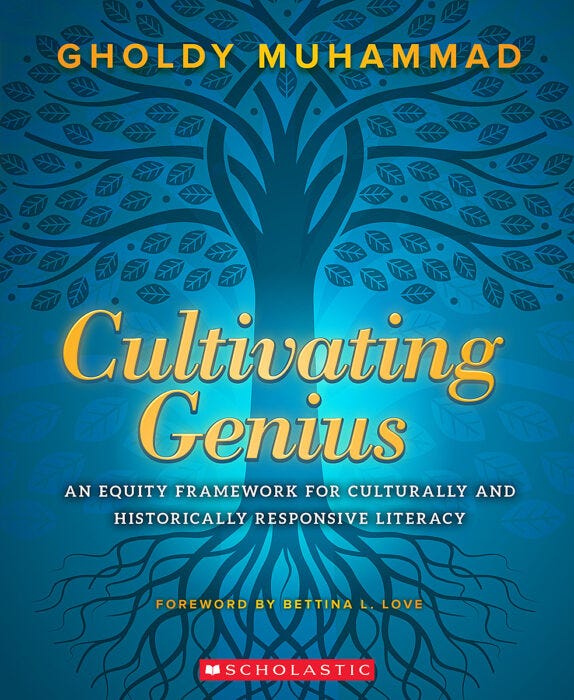Equity Projects
A Student-Centered Approach to Action Research
I have always enjoyed action research. As a teacher, I would agree to pilot new ELA resources partly out of the opportunity to assess their impact on student learning. The opportunity to understand if what I was doing was helping my kids or not helped me become a better educator and a more discerning user of practices and resources.1
As a principal, I have struggled to persuade teachers to engage in action research. Part of it is time, which I get. Lack of financial support and an overstuffed curriculum are also reasons cited to me. (I also think in some situations, a few teachers would rather not know if what they are doing is working, because it means that if they may not be utilizing effective practices or resources, prompting them to change how they teach. Change is hard.)
There is also the lack of confidence I sometimes see in teachers. “I am not a researcher,” I recall at least a couple educators proclaim. Teachers are researchers every day, especially the good ones. They are constantly examining how students respond to their instruction and adjust based on their informal observations. When teachers say, “I am not a researcher”, what they may really be saying is, “My perspective and experience is not as valid as what is published as traditional research.” This is untrue as well.
Still, I cannot force anyone to do action research. Which is why I have retooled the typical action research project and called them equity projects.
An equity project follows a similar process of action research: develop a driving question, set up an implementation plan, try out the new practice or resource, assess the results, and draw conclusions.
The main difference here is whatever practice or resource is investigated, it must seek a more equitable educational experience of kids. In other words, the project strives to:
give students what they need to support their success,
meet students where they are, and/or
break down barriers to success.2
This is one critique of action research, which I also happen to share: teachers can pursue any question they desire. The practice or resource may have a less-than-impressive evidence base to support its implementation.3 With an equity project, the driving question and implementation plan is intentional in pursuing better learning conditions for kids.
Project #1: Book Display Design to Encourage Reader Independence and Identity
This process is still a work in progress so I tried it with Micki, my school library media technology specialist. Her driving question was:
“How might we organize the book selection process that leads to both student choice and developing their reader identities?”
She has noticed this: Less confident or emerging readers will often select books based on its popularity. They don’t read widely, sticking with only Dav Pilkey books (no offense, Dav) or choosing the same titles as their friends. The concern is that these students may not truly identify as a reader and be too reliant on the opinion of others for book selection.
After developing a series of wonderings, three subquestions were created for this project:
Are students who come in individually more likely to be more adventurous in text selection vs. around peers? (Do they take more risks? Are they pushed outside their comfort zone?)
How can we frontload the selection process to support both goals?
Who will come in and choose the books: as a class or individually?
These questions will guide both the design of the project and the implementation plan. Data points for answering these questions include pictures of the display and the students interacting with it, written documentation of what kids are saying as they decide which book to select, and either a survey or an interview process to reveal their thinking process and motivations during the project.
Taking the Long View Toward Equity
Does this project give students what they need to succeed? Does redesigning a book display meet them where they are, or break down barriers to success?
From an immediate stance, maybe not. Traditional assessments such as standardized tests or screeners might not reveal a change in students’ attitudes about reading or themselves as readers.
Maybe this is why change is so hard to come by in education. We try to create a more equitable experience for kids now, in the context of school. All well and good. Yet equity is about lifelong change. How can we take the long view on student success? It seems to begin with the big question: What can I do that improves my students’ learning experience today and for tomorrow?4
If interested, give equity projects a shot with the template below,
...and let us know what you learned in the comments.
Some favorite books on action research include The Reflective Educator’s Guide to Action Research by Nancy Fitchman Dana and Diane Yendol-Hoppey, The Power of Questions by Beverly Falk and Megan Blumenreich, and The Action Research Guidebook by Richard Sagor.
Chaunté Garrett, Relevant Curriculum is Equitable Curriculum (Educational Leadership, 2021)
One educator who used to facilitate action research shared with me her disappointment when a group of teachers studied guided reading. She did not believe this practice to be effective, but she felt it was important to keep her opinion to herself. Maybe studying guided reading would reveal a lack of impact, but the teachers’ action research on this topic was not fully committed to improving student learning.
We will be exploring questions like this one during our summer book study in July. Ten contributors will be responding to the book Cultivating Genius: An Equity Framework for Culturally and Historically Responsive Literacy by Gholdy Muhammad. Subscribe to this space to receive each response.


I love this idea so much! I can think of a few teachers at my school who might love this idea. Thank you!